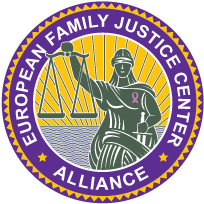COVID 19 impact on domestic violence and child abuse
Practical guidelines for professionals in assisting survivors from domestic violence and their families under the COVID 19 measurements with the focus on safety
Safety planning in cases of domestic violence and/or child abuse under the Covid-19 measures are not the same as before the crisis. It requires different skills, tools and assessment grounds, due to the circumstances in which the families find themselves because of a lock-down and/or social distancing and the fact that a lot has to be done by telephone or online.
Some practical guidelines:
- Ask clients directly about the assessment of safety. Always ask if it is safe to start a conversation. Ask clients what they are most hopeful for and most afraid of. This often provides valuable information for stress and needs. Ask how the situation evolves, what are the changes in the family situation.
- Map out who is in the house and at what times.
- More than ever, safety planning must be followed up as quickly and regularly as possible. Agree that you contact regularly to discuss safety, to see if the agreed measures work and adjust them to any changing circumstances immediately.
- Involve the social network as much as possible in monitoring the safety plan. This can be neighbors, family members, colleagues, friends, ...
- Teachers and schools can take on this task for children and young people. A regular outreach (if necessary, under the guise of school task guidance) to keep informed can be crucial.
- Agree code words to report impending crisis and threat. The code word, or a specific answer to a normal question agreed in advance, can send out an alarm for further help.
- If a peer group is available, involve them in the follow-up of safety. Make buddies between victims/family members who contact each other every day by telephone, chat,…
If possible, enter code words here that reveal a potentially dangerous situation. Give the peers direct access to a care provider if they are worried about their buddy.
- Previously prepared safety planning may no longer be accurate. Some cases may require a completely new and adapted safety planning. Proactively contact victims and their family member to discuss safety planning and revise if necessary.
- In cases of coercive control, be well aware of the dynamics and the situation of victims. Perhaps they don’t have any choice then to take a very confirming behavior towards their partner. It’s possible that victims don’t respond to the outreach of social help, care takers,…. Don’t withhold further action, because this can be an important warning sign. Take proactive contact and if needed involve police.
- If you work with perpetrators and/or have contact with them, talk about the stress they are experiencing. Exercise coping mechanisms to reduce stress. Discuss the build-up of tension and the impact of crisis measures on this tension. Give plenty of time to discuss what resources are currently available to reduce anxiety, stress and anger and practice them together if possible.
- Pay extra attention to those families where the violent partner stays at home with the children and the victim has to go to work. Provide a strong developed safety planning, involve the social network and follow-up the children on daily basis.
- If the victim has to work out (for example in the healthcare sector), check if this fact is not being used against her. For example, not letting her in the house, near the children,… because of a possible risk of infection. Discuss the fear about infection and agree upon health measurements with all family members.


